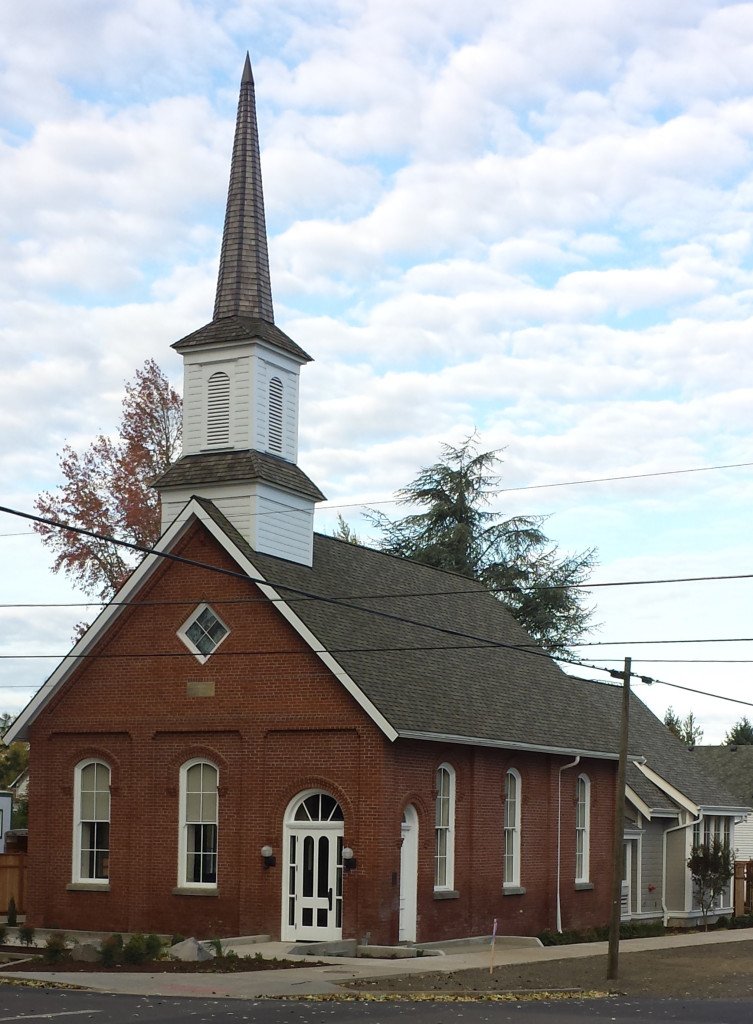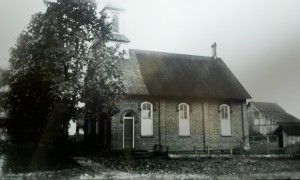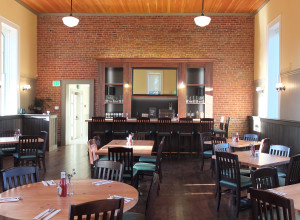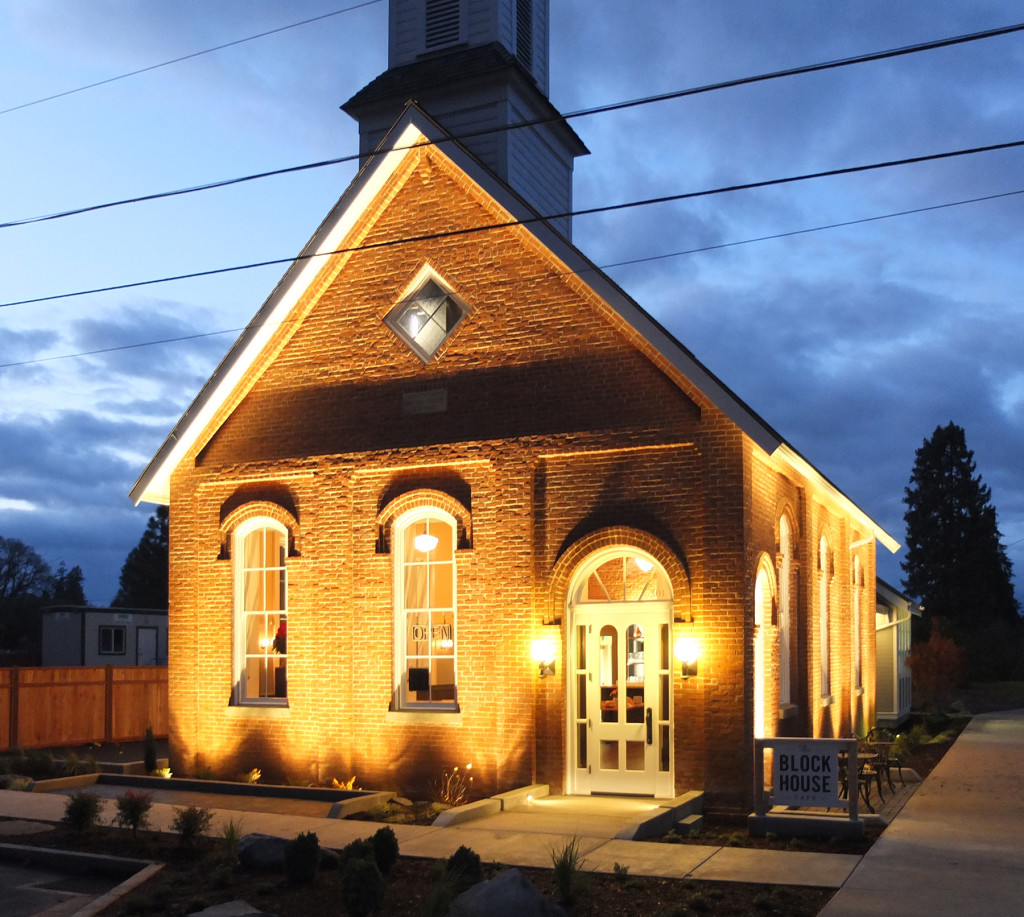
A charming piece of Dayton history is new again; repurposed as a favorite community gathering place…
In 1885, 12 members of the Village of Dayton and the Baptist Church of McMinnville voted to join together to create their own Dayton First Baptist Church. In April of the following year the church’s building committee reported to the congregation that they were “ready to receive bids for the erection of a church edifice for the public worship in the town of Dayton. All sums subscribed for the erection of church building be due November 1st, 1886.”
Jacob Seitter, a Civil War veteran from Ohio who started a brickyard shortly after his arrival in Dayton in 1875, provided the bricks to build the Dayton First Baptist church in 1886 (church minutes from July 31st of that year state “building committee reported that the contract for brick work had been let to Mr. J. Seitter $880”). Three bricks wide, the walls of the structure were built to last. This was Seitter’s first construction project and was his own design. The 30’ x 45’ one-room building is a good example of a traditional, conservative church parish, and is a fine example of early masonry construction in Yamhill County. By 1888 Seitter was living in McMinnville where he owned and operated the McMinnville Brick & Tile Factory. His bricks built many of the early McMinnville buildings including the former Yamhill County Courthouse, and McMinnville College, now Pioneer Hall, which was the first permanent building of the Baptist institution that would become Linfield College.
Over the years a number of alterations were made to the venerable church, including a parsonage that was built at the rear of the building in the 1930s and later attached to the church with an enclosed breezeway. In spite of these changes, Dayton First Baptist Church was listed in the National Register of Historic Places in 1979. Close to 100 years after the church was built, the Baptist congregation had outgrown the building and sold it to a private party. For the next 20 years, the old church briefly housed a small ice cream shop, but was mostly used as a residence as it continued to deteriorate.

In 2007 Bill Stoller purchased the property as part of a plan to restore some of downtown Dayton’s historic properties as part of a larger community revitalization strategy. Stoller and property manager Kelly Haverkate engaged the services of preservation architect Paul Falsetto, and in 2013 a plan was born to rehabilitate and adaptively reuse the church to create a new home for the locally popular Block House Cafe. This move would allow for a wonderful new use for the building, give the cafe a great venue, and allow for future rehabilitation of the historic building the cafe previously occupied.

Paul Falsetto met the challenge of rehabilitation while maintaining the historic integrity of the structure. Bricks inside and out were repaired, cleaned and re-pointed. Voluntary seismic upgrades were put in place with new floor and ceiling systems that were tied into the brick walls. The sanctuary was returned to its original simple open floor plan. The unsalvageable rear addition was removed and a new structure added to house a commercial kitchen, bathrooms, office, and storage. This new addition was designed to allow the historic church to remain the “star” of the site, while adding function to serve the new use of the building.
Today the Block House Cafe brings life back to this beautiful old building that graces downtown Dayton. The cafe is open for breakfast and lunch. They have a very loyal local following and are fast becoming known to out-of-area visitors for their hometown ambiance and delicious comfort food.


